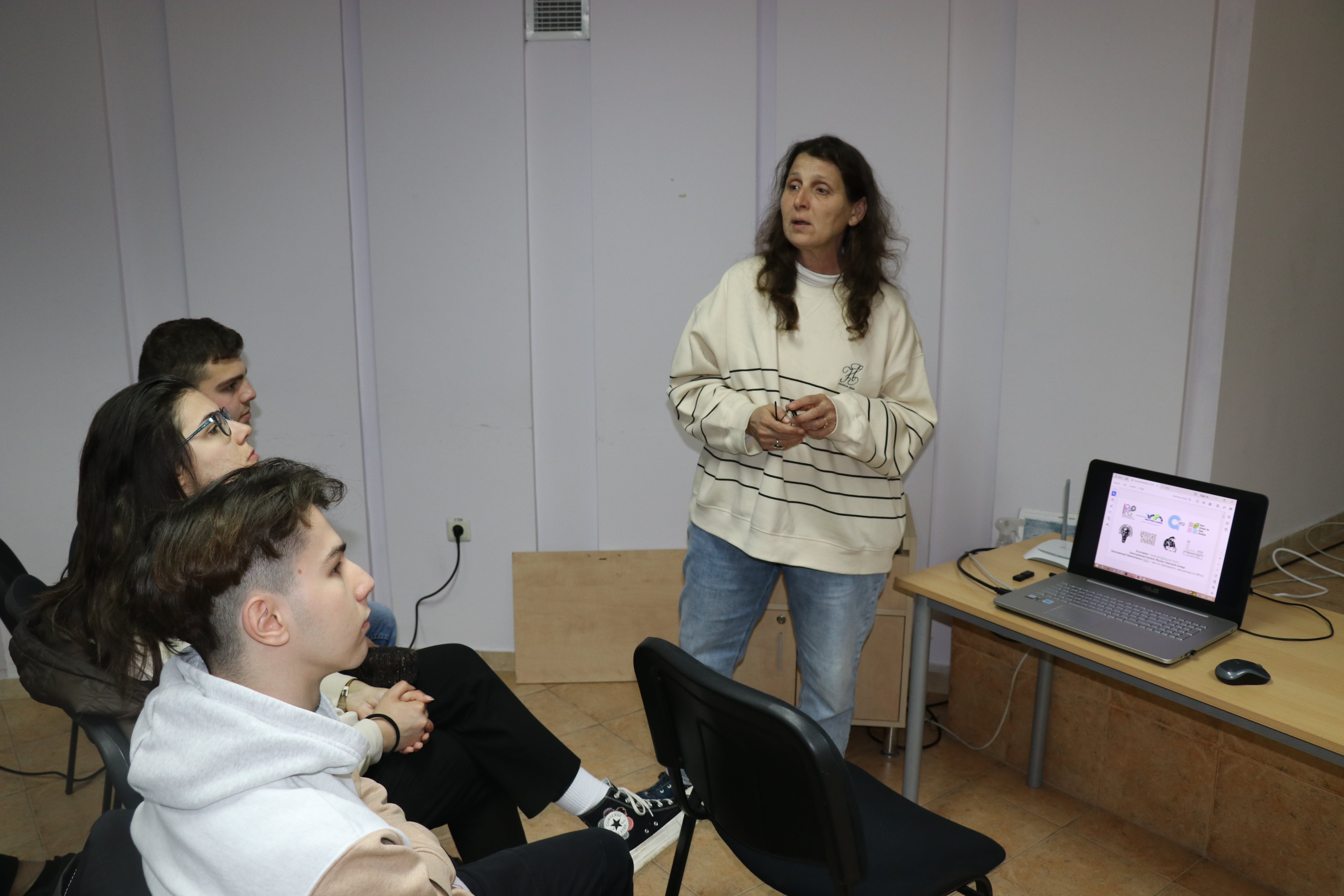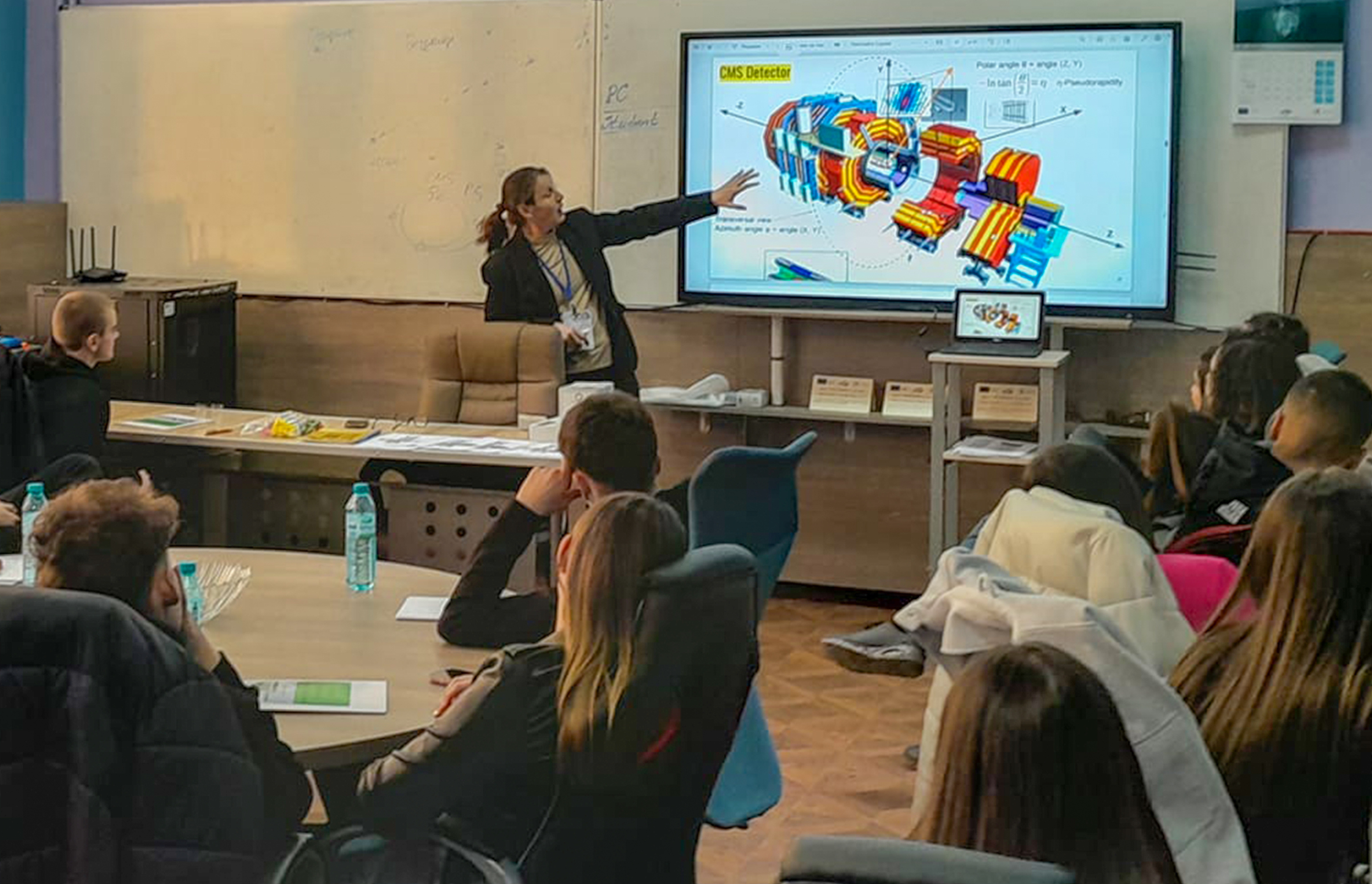Roumyana Hadjiiska, from Bulgaria, is Head of the High Energy Physics Laboratory at the Institute for Nuclear Research and Nuclear Energy, part of the Bulgarian Academy of Sciences. She is also the Bulgarian representative to IPPOG and a member of the CMS experiment at CERN. From a small library in northern Bulgaria to the world’s largest particle physics laboratory at CERN, Roumyana’s journey is one of perseverance, passion, and the strong belief that science should be shared with everyone. Today, she devotes herself not only to research, but also to inspiring the next generation through scientific outreach.
Her path to particle physics began with a single word on a yellowed page: Omega minus. What started as a child’s fascination with mysterious symbols grew into a lifelong mission to understand the universe’s smallest building blocks and to share that sense of wonder with others. Roumyana is our outreacher of the month of October. Read her interview below.
1. Can you introduce yourself and share how you became involved in the world of scientific outreach?
My name is Roumyana Hadjiiska and nowadays I am the head of the High energy physics lab at Institute for Nuclear Research and Nuclear Energy, Bulgarian Academy of Sciences. And I have the big pleasure to be a part of the CMS (Compact Muon Solenoid) experiment and to be the Bulgarian representative to IPPOG.
My journey to the particle physics was long and started many years ago in the small school library at my small home town in the north Bulgaria. I was a small child, suddenly enchanted by the magical symbols on the yellowed pages of a strange book, showing some incomprehensible curves and Greek symbols, saying Omega minus particle! Since that day I had a dream and a goal to understand more about the particle world.
It was not easy. We, all had to face the big economical and political crisis in Bulgaria in the end of the last century and even at that time I had to forget about my childhood and youth dream and to move to work in quite different area. But the dream is a dream and it never goes away. Years later I got the chance to meat new friends, who helped me to go back to school, to learn and grow as a scientists, and finally to go even beyond my dreams - to became a part of a such great scientific community at CERN.
That’s why, when I heard for a first time about the International Masterclasses (IMC), where the students analyze data from the CERN experiments, I had a new dream - to organize a masterclass in Bulgaria giving the possibility to our secondary students to touch the experimental data and to be a part of the global contemporary scientific activities. It was not a problem to find a like-minded colleagues and in 2018 we organized the first International masterclass in Sofia, Bulgaria.

2. What has been the most meaningful outreach activity you’ve organized or participated in, and why?
Every outreach activity matters. There couldn't be a great science if there is no support from the society. We have to explain the people what we are doing and why we are doing. And this is a daily work. By my opinion, the most meaningful is not a particular event, but the fact that we are able to grew up an particle physics outreach community. We have well established connection between the scientists, teachers, students and many friends in Bulgaria. I would avoid to say that all that organization is thanks to me only, because the outreach is a common and a team work. But I am happy to be part of such a cell of particle physics enthusiasts. Apart from the IMC, me and my colleagues participate or organize regularly many scientific open days, festivals and exhibitions; we visit schools, traveling all over the country. As a very good example, I would point to the public session accompanying the 25th IPPOG collaboration meeting, organized thanks to the Sofia Tech Park in 2023, including public classes for teachers, student exhibition, a panel discussion on the quantum computing and a rock concert by particle physicists.
3. What inspires you the most about sharing particle physics with the public?**
The curiosity of the public and their thirsty of knowledge. The excitement when somebody is able to “rediscovery” a Higgs boson or other particle. The feeling, that you have made people feel important. To leave them to demonstrate their knowledge and to learn from them, as well. I have to admit that even after many years, I am never prepared for all the unexpected questions. So, I have to learn every time before an outreach event and I have learned much from the society, as well.
4. What message would you like to share with younger generations through your outreach efforts?**
Everyone could be engaged with science. The outreach is not just to inform the society about the scientific achievements, but to make people feel that they could be a part of this work. It is important to promote the scientific work, but the more important is to make the people believe that if they want, they could become scientists and if they work, they have a chance to make their own discoveries. So, young people, if you dream to be a scientist and want to reveal the nature secrets, never give up and just follow your dream!



